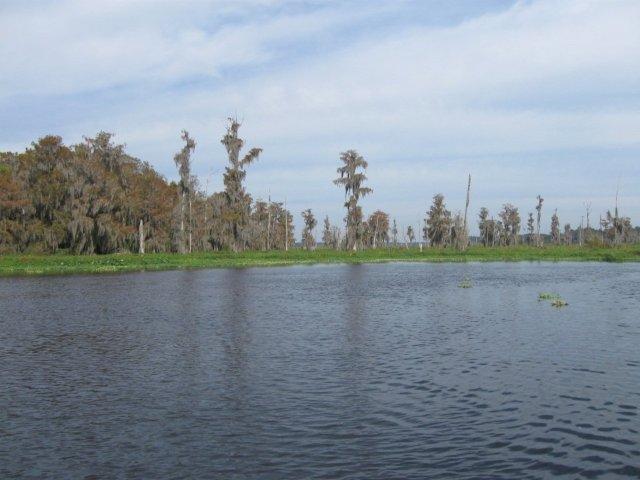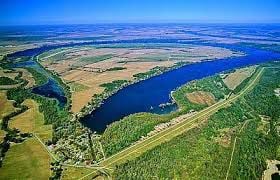

“People can still come out with their boats when the water is down,” she said. “I think it was just great a little spring got so many people going,” said Chadwick, who also was the captain on one of the two media tour boats.Īs the boats rolled past people fishing along the shoreline, sometimes within a few feet of their vehicles, Chadwick said those anglers wouldn’t have access to the reservoir when the water level is raised again unless they have a boat. The flooding of Cannon Springs sparked opposition that led to the creation of the statewide environmental group Florida Defenders of the Environment, said Karen Chadwick, outreach coordinator for the Putnam County Environmental Council. In other spots, he pointed to small channels flowing from the shoreline as evidence of springs located deeper in the forest. Sometimes they were relatively clear pools amid the dark reservoir water. Tall trees - a mixture of pines and cypress trees - come into closer view along the higher reaches of the shoreline.Ĭhris Spontak, vice president of the Silver Springs Alliance, held a map of 21 springs that were flooded by the dam, and pointed journalists to areas where he said springs still exist. Going upstream several miles from the Kenwood boat ramp, vast clearings appear among the numerous stumps, pointing the route of the channel dug for the former barge canal.īut there are gradually fewer stumps in the water moving away from dam as the reservoir becomes more narrow. Johns River or with a restored Ocklawaha River, as would other fish and wildlife species. Reservoir opponents say eagles would continue to thrive along the nearby St. For reservoir supporters, the eagle snatching up fish represents the nation’s symbol thriving in a healthy ecosystem.

The wildlife provides loaded symbolism for both sides. In addition to the bald eagles patrolling the reservoir, squadrons of white ibises, a white shorebird with a curved pink beak, poke through aquatic vegetation and work through the tree stumps and floating logs, which state officials warn boaters to avoid. Supporters of the reservoir say the world-class bass fishing boosts the region’s economy, and that it is a nature preserve of its own that also could serve as a future water supply for the region. (Anglers are required to release any largemouth bass they catch until water levels are raised again.) The drawdown concentrates trophy bass in the river channel and the shrunken reservoir pool to make them easier to catch, according to state wildlife officials, who post photos of the reservoir’s trophy bass on the wildlife commission’s website. Several anglers were also out in boats to take advantage of the drawdown, casting bait and lures among the stumps that mark the edge of the natural river channel that has been submerged. Those bent trees still remain pointing in all directions, like a box of toothpicks dumped into a bowl. Where the trees were not cut decades ago, they were flattened by some type of crushing machine.


They help form an outline of the twisting river channel that still exists below the shallow reservoir, also called Lake Ocklawaha. Some are 10 feet or more across, huge cypress trees that must have stood for centuries before they were cut. On the other side, thousands of stumps from the former forest along the river emerged after the water was lowered. 7 to show off the areas exposed by the drawdown, which lowered the reservoir level by 7 feet - for the first time since 2012 - and is designed to help kill aquatic weeds and allow sediment to dry out to improve spawning habitat for bass and other fish.įrom the Kenwood boat ramp, now extended onto the exposed bottom of Rodman Reservoir, the view looks like a moonscape of clearing on one side for the former barge channel. The alliance hosted a 15-mile boat tour for journalists on Dec. “The time is right - it’s long overdue,” said Bob Knight, president of the Silver Springs Alliance. But they face opposition from some anglers and local elected officials who value the reservoir its production of trophy bass.įor environmentalists the drawdown provides a glimpse of a river and floodplain forest that once existed, which they say could be restored if state officials can be persuaded to right an environmental wrong. The canal was intended allow ships to move across the Florida peninsula from the Atlantic Ocean to the Gulf of Mexico, but President Richard Nixon halted the project in 1971 in response to environmental opposition, leaving the 15-mile long reservoir to cover 9,500 acres in Putnam and Marion Counties.įor more than 40 years, environmental groups have been pushing to breach the dam, located about 50 miles southwest of Jacksonville, and restore the river.


 0 kommentar(er)
0 kommentar(er)
